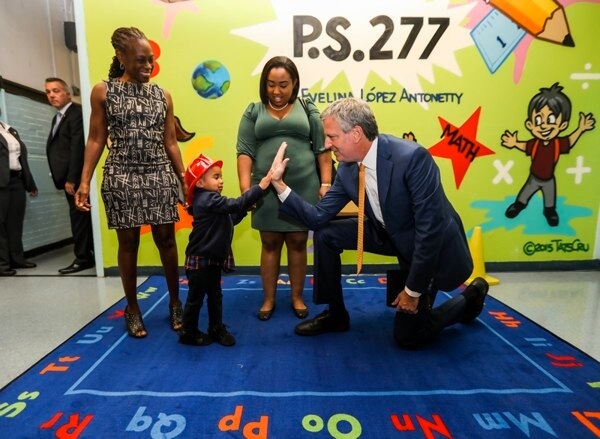By Gina Martinez
A new report from the Citizens Committee for Children revealed that childhood poverty has Queens decreased.
The nonprofit’s report, “Keeping Track of New York City’s Children,” tracked issues, including housing, education and health that affect the city’s 1.8 million children. The organization looked at data from a five-year period, 2012 to 2015, across all boroughs. While the study showed that the poverty rate in Queens has declined, there are certain areas in the borough where children are struggling.
According to the report, boroughwide the high school graduation rate went up from 63.6 percent to 70.5 percent and the high school drop-out rate went down from 9.5 percent to 7.9 percent. Early education numbers in Queens also saw improvement as 3-year-old and 4-year-old enrollment in early education went up from 58.4 percent to 56.6 percent.
In other areas the results were mixed. According to the report, families entering homeless shelters in Queens (per 1,000 households) went up from 1.5 percent to 1.7 percent, while children living in overcrowded rental space went up from 12.6 to 12.8 percent.
The report also revealed that while the poverty rate went down from 16.2 percent to 13.8 percent in Queens, parental employment instability rose from 25.3 percent to 26.3 percent and median income for families with children in Queens barely went up, rising from $57,436 to $57,735.
According to Jennifer March, executive director of CCC, the data from the study highlighted “significant geographical and racial/ethnic disparities” throughout different neighborhoods and a need for greater investment to address the needs of children and promote economic mobility.
“With the largest population of children in the country, what we do for our youngest New Yorkers has the potential to raise the bar nationwide on how we approach efforts to strengthen outcomes and combat disparities,” March said. “We must leverage the data to help us identify opportunities to build on recent successes and better address the barriers to well-being children and families continue to face in their daily lives.”
March said the most significant finding was that although median incomes have begun to return to their pre-recession levels, the median family income is over $200,000 in some districts, compared to just over $20,000 in others. The report also found that despite the economic recovery, nearly 70 percent of poor New York City households spend at least half of their income on rent and the number of families with children entering homeless shelters increased more than 20 percent from 2013 to 2016 citywide.
CCC listed multiple suggestions for the city moving forward to improve the quality of children’s lives in the city, including managing access to programs like Pre-K for All and 3-K so that kids in neighborhoods like Ozone Park, Howard Beach and Broad Channel, which has lower education enrollment rates compared to the rest of the borough and city, can take advantage of the programs. According to March, the foundation for a child’s social and emotional growth and school readiness is set in infancy.
“Much more must be done to expand access to affordable family-based and center-based care for infants and toddlers,” she said. “As Pre-K for All and 3-K continue to expand, the roll out of new seats must be managed in a way that promotes an integrated system serving all race, ethnicity and income groups.”
The CCC also suggested reduced priced MetroCards, vans, shuttles and buses in hard to reach communities.
“Access to transportation is a critical ingredient in school participation, labor force attachment and economic mobility; and yet, far too many regions of the city are socially isolated and the cost of transportation is prohibitive for poor New Yorkers.” March said.
Finally CCC suggested increased attention being paid to the unique needs of homeless children and their parents.
“Prevention must not only be strengthened, but significant investments must be made to provide appropriate services while children are in shelter as well as to continue needed supports once the family is permanently housed.” March said.
Reach Gina Martinez by e-mail at gmart































